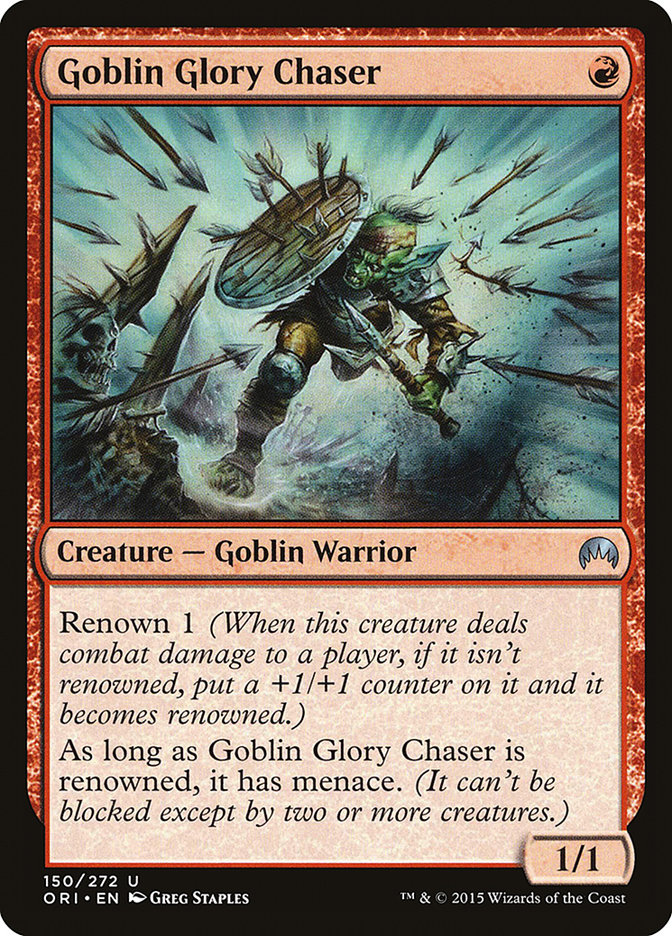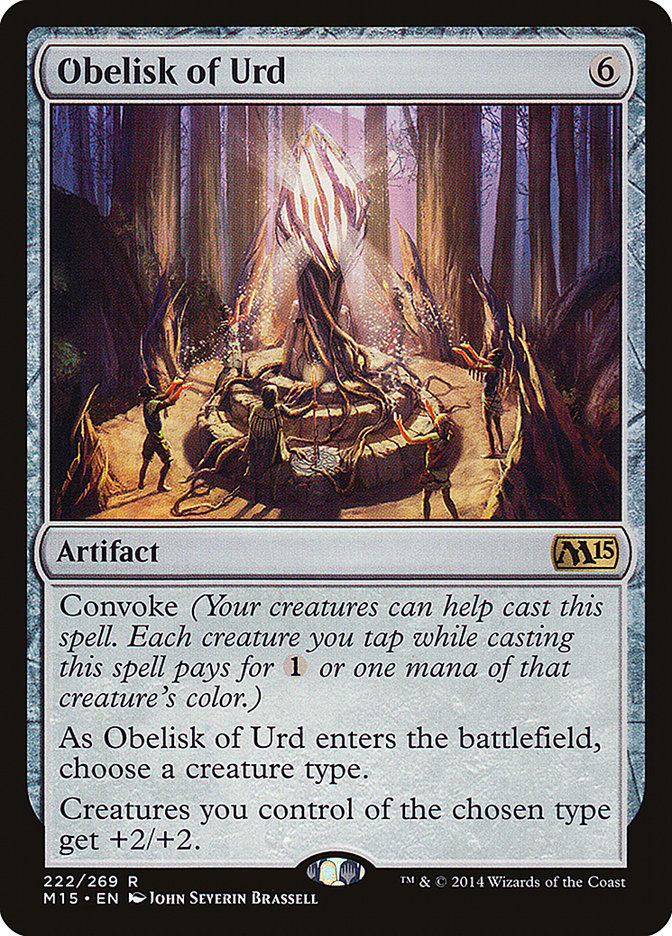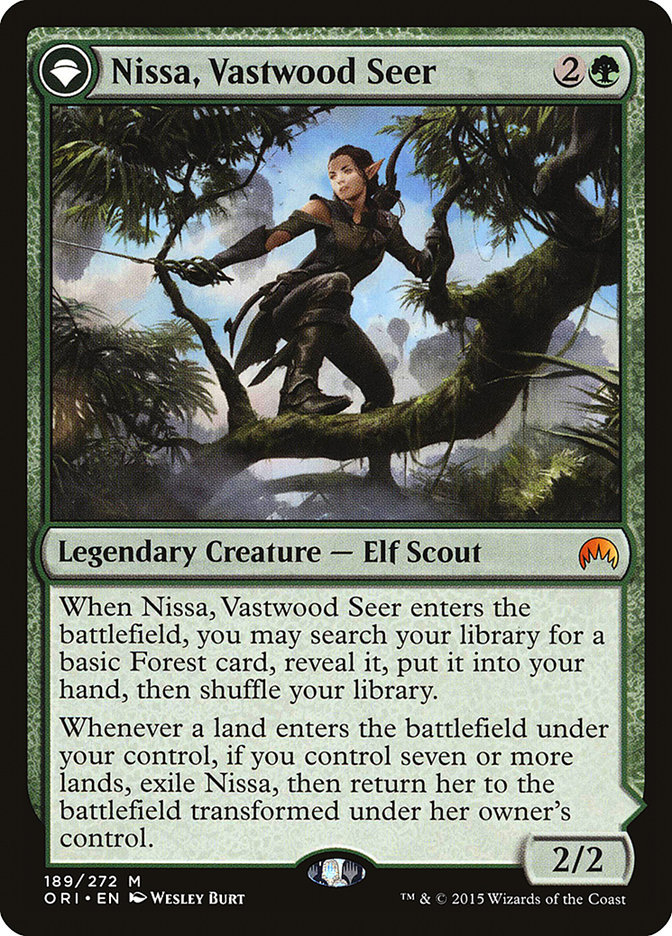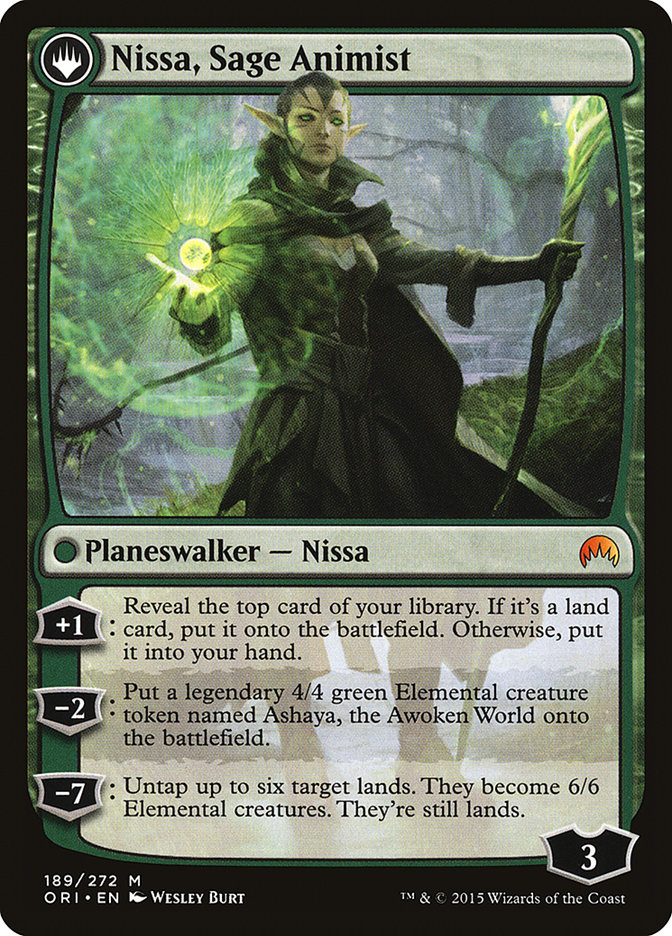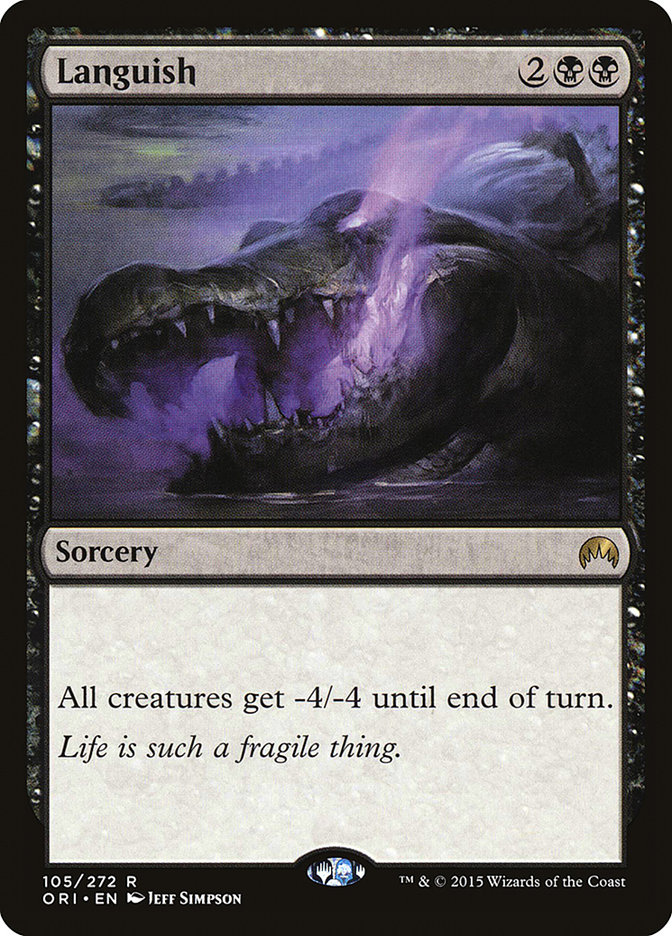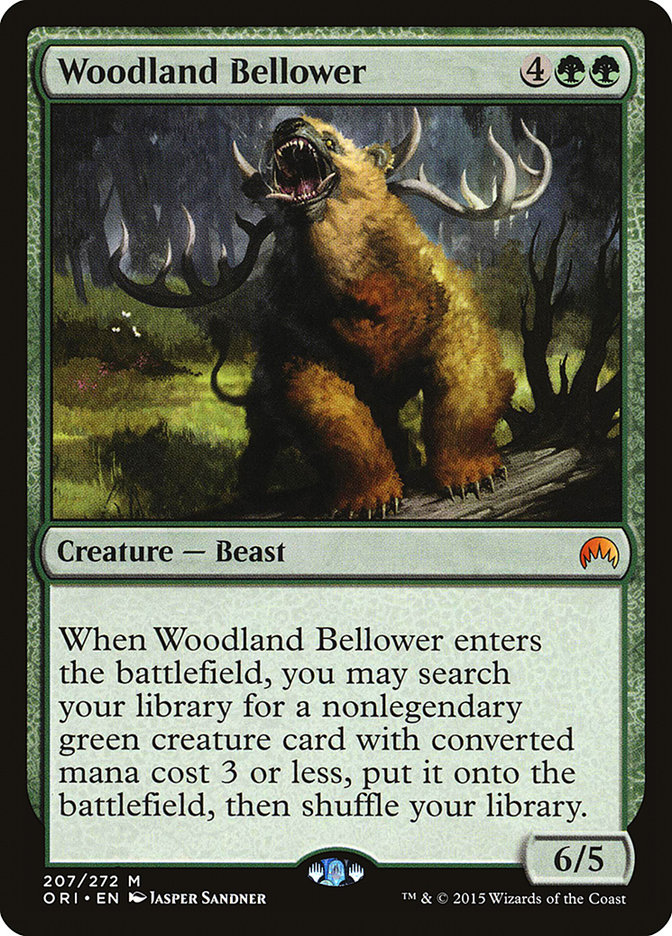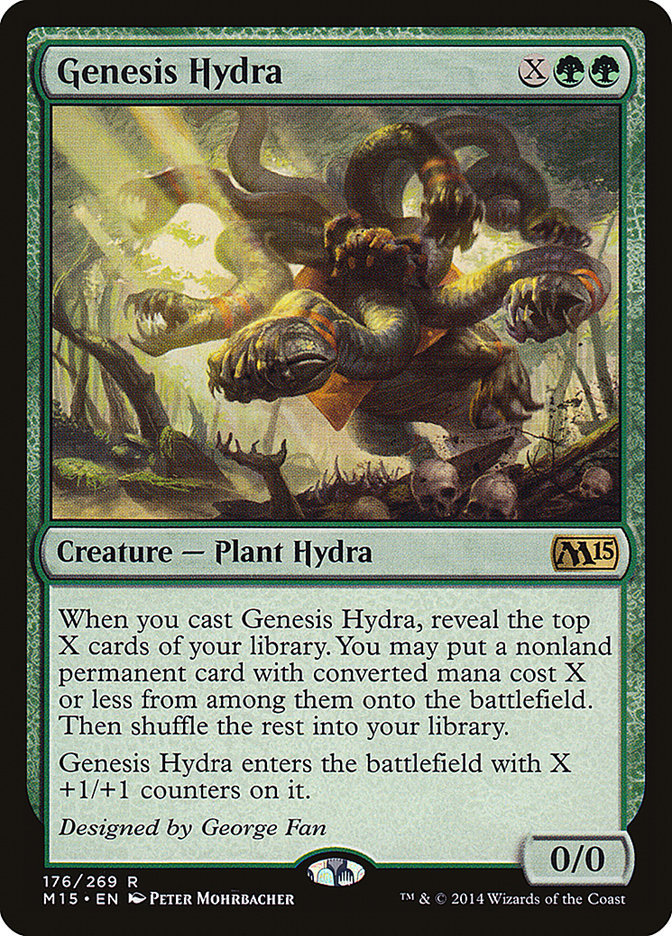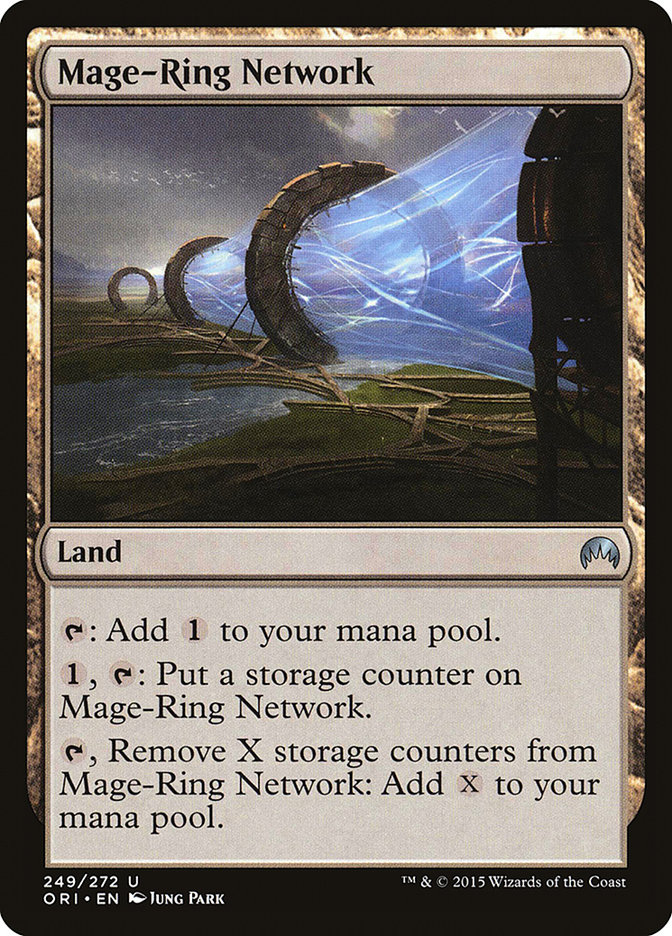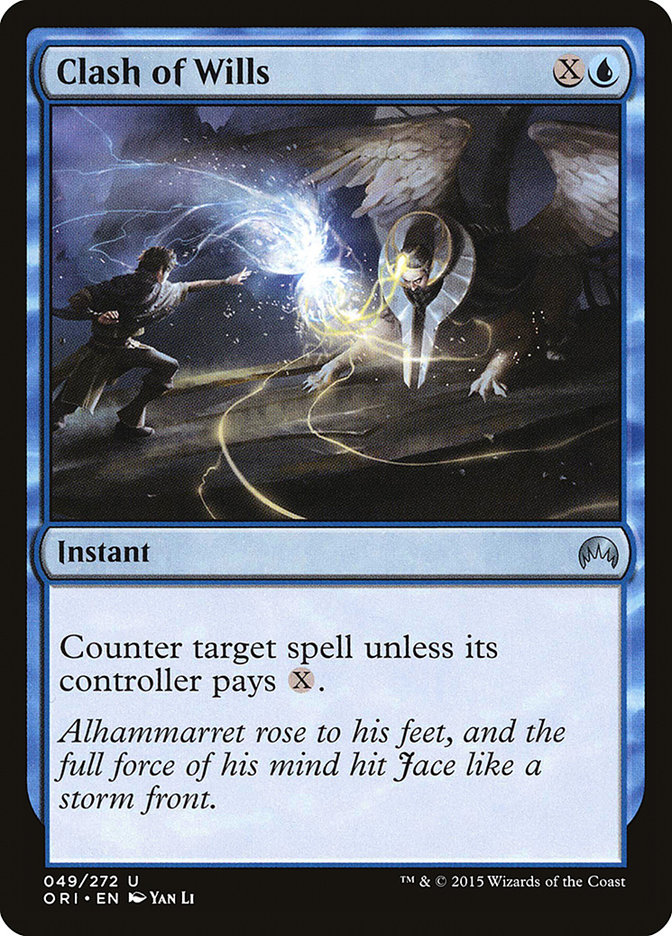The last several weeks have been filled with excitement over the release of Magic Origins and for good reason. The last Core Set appears to be replete with powerful cards for Constructed formats that should shake up what has already been the most dynamic year of Standard I have ever seen.
Yes, everyone is looking to find the latest unheralded card that turns out to be a powerhouse and ride their foresight to victory in the opening weeks of the format, whether that be at the Standard Open in Chicago next weekend or at Pro Tour Magic Origins in Vancouver the following weekend.
However, it is important to not lose yourself in a mountain of sweet brews since as we all know the vast majority of these creations, no matter how intriguing they seem on paper, will not yield tournament-quality decks. The most likely scenario is that the most successful cards in the new set will be those that slot into already established and well-tuned archetypes.
In order to tune those archetypes for a post-Origins metagame as well as create the best possible testing ground for your new decks, it is paramount to create an effective baseline of popular decks that you will expect to play at least once, if not multiple times, at early tournaments.
I am of course describing a testing gauntlet, and today I’m going to go over the gauntlet I will be using for the next few weeks to prepare for the last hurrah of Theros Standard.
It is important that your gauntlet be as small as possible while still covering a wide range of strategies. Testing time is valuable, and using it playing against two or three redundant decks will bias your decks and leave them vulnerable against the decks you ran out of time to properly test against.
Only once you have whittled your list of options down to only a few decks should you move on to testing against secondary archetypes as a final tuning process. The gauntlet I present today should serve as the initial viability test for any new deck.
It is also important to bias your gauntlet towards what you think will be played, even if you believe that list to be suboptimal. There is nothing worse than being caught unprepared for something that you had initially anticipated but dismissed because you assumed everyone else would arrive to the same conclusions you did. The point here is to prepare against the field as it is, not what you think it should be.
Of course you may think that your versions of decks are more likely to succeed in the early tournaments, so testing against those lists is valuable in order to be prepared for the later rounds, but as I noted earlier the gauntlet is the initial test run for new decks and thus it should look more like the field as a whole rather than the winner’s bracket.
The Aggro Deck
Creatures (23)
- 4 Goblin Piledriver
- 1 Frenzied Goblin
- 4 Foundry Street Denizen
- 4 Goblin Rabblemaster
- 1 Goblin Heelcutter
- 2 Zurgo Bellstriker
- 3 Subterranean Scout
- 4 Goblin Glory Chaser
Lands (21)
- 21 Mountain
Spells (16)
Sideboard

Red aggro has been a staple of the metagame for a while now, and I believe the power of the new Goblins will put this version of the deck above the rest. In particular, the synergy between Subterranean Scout and Goblin Piledriver and/or Goblin Rabblemaster combined with Goblin Heelcutter and Frenzied Goblin makes blocking incredibly difficult while the token generators give you resilience in the face of removal.
The card I’m not sold on is Goblin Glory Chaser. While reminiscent of Goblin Guide, the card is simply underpowered relative to the rest of the deck and I could easily see players forgoing the added Goblin synergy in order to play a more powerful card like Monastery Swiftspear. But for now I would expect most players to take the Goblin synergies to the max as well as try the new cards, so this is what I will be testing with.
There could also be players that choose to maindeck Obelisk of Urd, but with space being so tight I think it is best reserved for the sideboard to bring in against decks that lack enough removal to punish us for having it in our deck.
Elves is another strong candidate for the aggro slot in the gauntlet and could surpass Goblins in the metagame, but that deck will take a while to become tuned so Goblins should be the top aggressive deck at least in the early days of Origins Standard. This deck is incredibly punishing on slow draws or clunky, untuned decks – which makes it a great litmus test – and so far it has dismantled many brews in my testing even if they seem to match up well against it on paper. Respect the little green men.
The Midrange-Aggro Deck
Creatures (28)
- 4 Elvish Mystic
- 4 Stormbreath Dragon
- 4 Rattleclaw Mystic
- 2 Ashcloud Phoenix
- 4 Thunderbreak Regent
- 3 Den Protector
- 4 Deathmist Raptor
- 3 Nissa, Vastwood Seer
Lands (24)
Spells (8)

Dragons did not gain much from Magic Origins, but it also did not have to gain much because it is already incredibly powerful. Eric Rill and Steve Rubin adopted the Deathmist Raptor + Den Protector package to much success a few weeks ago, and I expect that to become stock.
I also noted how Goblin Rabblemaster has underperformed in this deck for quite a while. While the dream of playing it on turn two with an Elvish Mystic is alluring, this deck is really winning with its high-end threats and the rest of the deck should support that plan.
Raptor plays great defense on the ground and can attack if necessary while Den Protector provides great flood insurance in a deck that plays more mana sources than most and few sources of card advantage.
Nissa, Vastwood Seer ensures that you hit your land drops so you can cast your Dragons on or below curve, and she also provides added flood insurance by turning into a threat in the later stages of the game. With the aggressive decks gaining some added power, Dragons needs to adapt and play better defense and Nissa does that as well since the immediate value she provides makes trading her away immediately an easy choice. I really cannot say enough about how good this card is and I fully expect it to make its way into most green decks, especially anything in the midrange category.
The deck is a bit weak to red aggro, so an early metagame filled with Goblins could cause this deck to decline, but it matches up well against other popular decks and has the raw power to overwhelm the untuned decks that often appear at tournaments directly following the release of a new set.
The Midrange-Control Deck
Creatures (22)
- 4 Courser of Kruphix
- 4 Satyr Wayfinder
- 4 Siege Rhino
- 2 Tasigur, the Golden Fang
- 4 Den Protector
- 3 Deathmist Raptor
- 1 Nissa, Vastwood Seer
Planeswalkers (2)
Lands (24)
Spells (12)

There are plenty of ways to build an Abzan deck right now, but this is the one I expect to be most popular and it gives your decks more practice against the Deathmist Raptor + Den Protector engine.
These decks were already starting to incorporate sweepers like Crux of Fate in the maindeck as evidenced by Josh McClain list from Grand Prix Providence, and I think Languish fits very well into the deck since it deals with most of the threats you want to kill while leaving your Rhinos and Tasigurs alive. I still have the more powerful sweeper in the sideboard for decks like G/R Devotion, but for the most part I think Josh’s list will not change much.
As much as I would like to play more copies of Nissa, Vastwood Seer in this deck, the manabase cannot fit the required number of basic Forests, and I have even added a third just for the single Nissa to hit more often.
Of all the decks I’m presenting here I think this will be the one the fewest players forget since Siege Rhino and friends have been so ubiquitous throughout the last year of Standard, but I could see a build that uses Languish more effectively by cutting Deathmist Raptor and Satyr Wayfinder and instead looks more like a traditional Abzan Control deck with more Tasigurs.
If Languish becomes more popular it is also reasonable to expect Wingmate Roc’s stock to decline, so I would also look for different options in that slot as a trump card in midrange mirrors. Gilt-Leaf Winnower could be a good option if people overload on Tasigur.
The Ramp Deck
Creatures (33)
- 2 Hornet Queen
- 4 Elvish Mystic
- 3 Polukranos, World Eater
- 4 Sylvan Caryatid
- 4 Voyaging Satyr
- 4 Courser of Kruphix
- 2 Genesis Hydra
- 4 Whisperwood Elemental
- 3 Dragonlord Atarka
- 3 Nissa, Vastwood Seer
Planeswalkers (3)
Lands (24)

As great as the cards in Magic Origins look, I doubt we will find a strategy more potent than casting Dragonlord Atarka on the fourth turn. Nothing is going over the top of this deck so you are forced to interact early, go underneath it, or get ruthlessly punished.
We have seen Deathmist Raptor incorporated into this deck as another midgame threat, but I think Nissa, Vastwood Seer will prove to be better since it guarantees you hit your land drops and is great if you are flooding. Without the synergy with Raptor it should be time to move back to Voyaging Satyr instead of Rattleclaw Mystic, especially because the former is so potent in the mirror.
I was initially high on Woodland Bellower in this deck especially because I have been unimpressed by Genesis Hydra recently, but that was because Hydra was rather ineffective early and Bellower is even worse there since you can at least cast a smaller Hydra to try and find another mana creature or a three-drop. While Bellower provides guaranteed value it fails to match the power of Genesis Hydra in the long game, so despite its power I think Bellower will fail to make this deck. Not being able to find Nissa, which would be the best possible target, is the final strike against it.
This deck has great tools to beat aggressive decks and has always been favored against midrange decks but will struggle against control decks, especially since they have gained some new tools as well. But if the Goblin decks can suppress control, expect Devotion to have an easy time in the coming weeks.
The Control Deck
Creatures (1)
Planeswalkers (2)
Lands (27)
Spells (30)

With cards like Languish and Celestial Flare giving a variety of decks easy answers to Dragonlord Ojutai, I think the control decks will move back to the older, Perilous Vault-style lists and away from the Dragons.
Mage-Ring Network is fantastic with both Perilous Vault and Ugin, the Spirit Dragon and can ensure that your copies of Clash of Wills remain relevant later in the game. However, Radiant Fountain is going to be very important against aggressive decks, so it is difficult to find space for more than one in the maindeck and I am stretching the mana even to do that. If the metagame slows down, having more copies will become necessary. The second in the sideboard should be great in control mirrors that are often decided by mana advantage.
Clash of Wills gives the deck a solid replacement for Silumgar’s Scorn in the early game while allowing you to bias the mana towards black so you can cast cards like Bile Blight, Drown in Sorrow, and Languish on time. It could be that an even more black-heavy list that plays a more tap-out style could be better by taking advantage of Dark Petition, but that deck would be a significant underdog in the mirror and should be less popular even if it is the better option.
Languish is particularly good for U/B Control since it is an efficient answer to monstrous Fleecemane Lions and Rakshasa Deathdealer, which were previously issues for the deck. Having the cheaper sweeper in the maindeck will also help against aggressive decks.
There are plenty of options for the exact split of removal spells, counterspells, sweepers, and card draw, so this deck will likely take a lot of effort to tune correctly as well as a good prediction of the early metagame. I believe it will reward whoever puts that effort into finding the right list, and you should still be aware of it for your tournaments.
Evolve Your Gauntlet!
While it is much more exciting to work on brand-new decks and evolve them as you test against the gauntlet, it is important to evolve your gauntlet as well as you gain new information from testing, reading articles, and talking with other players. These are the lists I’m using right now, but they will certainly change over the coming weeks as I gain a better idea of what cards are working and what cards are not.
You can also gain a lot of valuable information by testing the gauntlet decks against each other to see if new cards fundamentally alter the heretofore known matchups. If something radical changes that will likely cause a significant shift in the new metagame which is easy to exploit, it will be greatly helpful for you to know either that a new deck’s weakness is against a deck you expect to wane or that you might want to play a gauntlet list that has turned around a matchup unexpectedly.
Spoiler season is a time of great anticipation and creativity for all of us, but it is important for you to stay grounded throughout the process and always keep the baseline of the format in mind or you will waste too much time building a deck that cannot compete.

